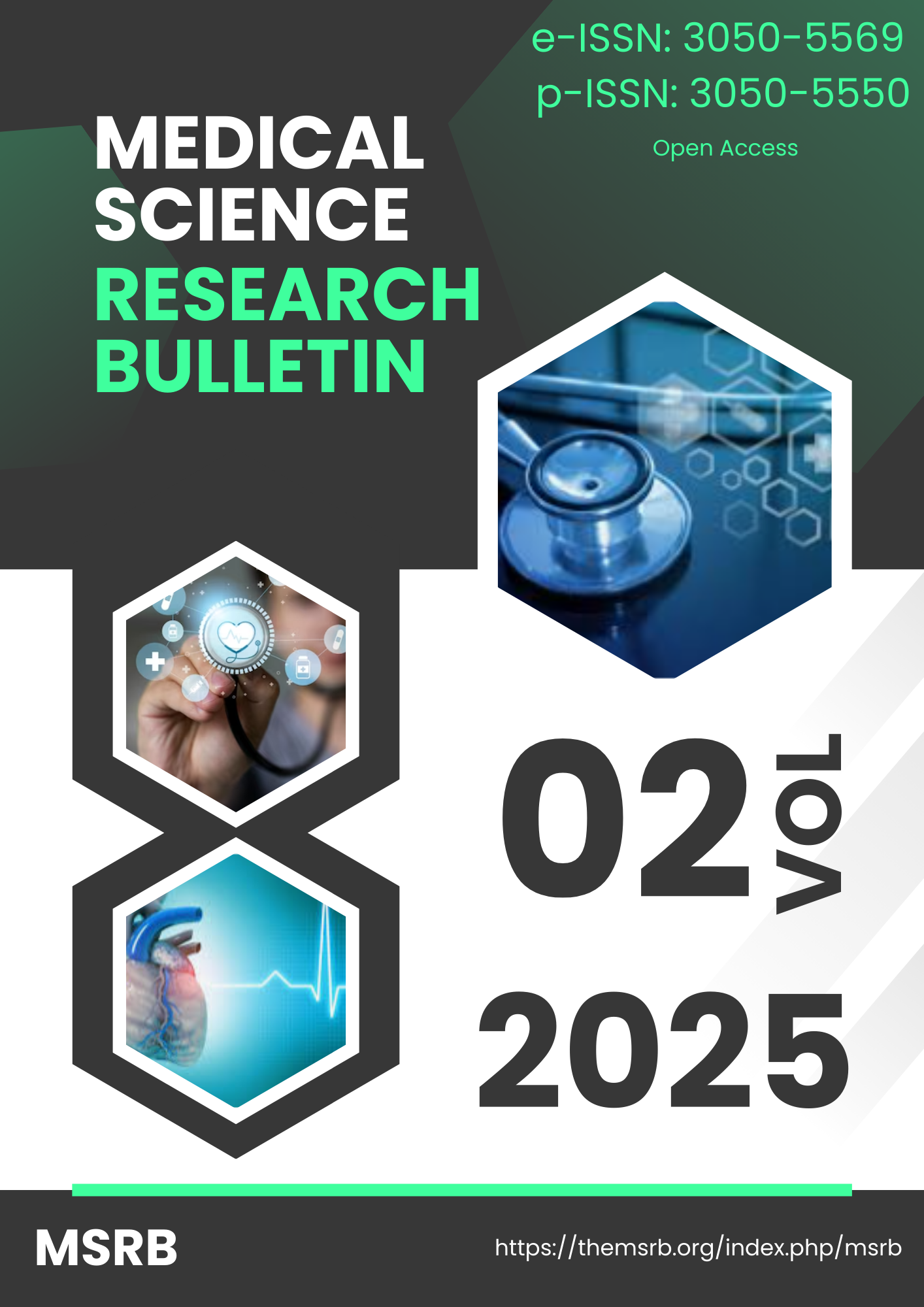Visual and Psychological Challenges Associated with Geriatric Ocular Disorders among Patients Visiting the University of Port Harcourt Teaching Hospital, Rivers State Nigeria
Keywords:
Depression, disorder, geriatric, ocular, psychological, visualAbstract
This study ascertained the visual and psychological challenges experienced by geriatric patients affected by age-related ocular and visual disorders. It involved a detailed eye examination and interview of 243 subjects to find out the predominant ocular/ visual disorders and physical challenges experienced. The most predominant ocular disorder observed were cataract, affecting 76.5% (n=186), glaucoma, 54.3% (n=132), age-related macular degeneration, 38.7% (n=94) and diabetic retinopathy 24.7% (n= 75). Similarly, the most predominant visual challenges reported, was difficulty reading prints with a mean score of 4.21±0.87, followed by inability recognizing faces (3.95±0.96), driving (3.82±1.12), watching TV (3.76±1.03), and performing daily activities surfaced as particularly problematic. The quality of life assessed using the WHOQOL-BREF questionnaire revealed moderate scores across visual (+13.42), psychological (12.36), social relationship (6.78), and environmental domains (14.21). Intriguingly, high levels of psychological distress were revealed, particularly in the realms of anxiety with mean score of 14.92±2.34 and depression with mean score of 7.86±2.18, unveiling the intricate connection between ocular disorders and mental well-being. Conclusively, this study underscores the necessity for a comprehensive healthcare approach that addresses not only the physical implications of ocular disorders but also their profound psychological impact emphasizing the need for early detection and intervention strategies, fostering supportive networks, and implementing targeted rehabilitation programs to enhance the overall well-being of the elderly. The study findings augments existing knowledge concerning geriatric patients challenges resulting from ocular disorders and advocated for policy formulation and an integrated healthcare approach to holistically cater to the multifaceted needs of the elderly.
References
Amedo, A. O., Adade, S., Koomson, N. Y., &Osae, E. A. (2016). Influence of visual impairment on the quality of Life: A survey of patients reporting at the low Vision centre of the Eastern Regional Hospital of Ghana. Journal of Ophthalmic Science, 1(3), 1-13.
Asferaw, M., Woodruff, G., & Gilbert, C. (2017). Causes of severe visual impairment and blindness in students in schools for the blind in Northwest Ethiopia. BritishMedical Journal of Global Health, 2(2), e000264.
Budenz, D. L., Bandi, J. R., Barton, K., Nolan, W., Herndon, L. & Whiteside-de Vos, J. (2012). Blindness and visual impairment in an urban West African population: The Tema Eye Survey. Ophthalmology, 119(9), 1744-1753
Chia, E-M., Wang, J.J., Rochtchina, E., Smith, W., Cumming, R.R., & Mitchell, P. (2014). Impact of bilateral visual impairment on health-related quality of life: The Blue Mountains Eye Study. Investigative Ophthalmology & Visual Science, 45(1), 71–76.
Chou, C-F., Cotch, M.F., Vitale, S., Zhang, X., Klein, R., Friedman, D.S., Klein, B.E.K., &Saaddine, J.B., (2008). Age-related eye diseases and visual impairment among U.S. adults. American Journal of Preventive Medicine, 35(1), 45–52.
Centers for Disease Control and Prevention.(2021). Vision loss and age. Retrieved from https://www.cdc.gov/visionhealth/risk/age.htm
Cleveland Clinic. (2020). Common age-related eye problems. Retrieved from https://my.clevelandclinic.org/health/articles/8567-common-age-related-eye-problems.
Doorslater, EV.,Kippersluis, HV., O’Donnell, T., &Ourti, TV. (2012) Socioeconomic differences in health over the life cycle: evidence and explanations. Network for studies on pensions, aging and retirement.panel paper 12.Published December 2008.
Filho, AA. (2008). Prevalence of visual impairment, blindness, ocular disorders and cataract surgery outcomes in low-income elderly from a metropolitan region of São Paulo ArquivosBrasileiros de Oftalmologia.71(2):246–253.
Hootman, J. M., Helmick, C. G., & Brady, T. J. (2012). a public health approach to addressing arthritis in older adults: the most common cause of disability. American Journal of Public Health, 102(3), 426-433.
Lamoureux, EL., Hassell, J. B, Keeffe, J. E., (2008). Impact of vision impairment on vision-specific quality of life among older adults living independently. Optometry and Vision Science, 85(12), 948-954.
Lamoureux, E. L., Hassell, J. B., &Keeffe J.E.,(2009) The impact of diabetic retinopathy on participation in daily living. Archives of Ophthalmology 127:84-90.
Lamoureux, E. L., Fenwick, E., Pesudovs, K., & Tan D., (2011). The impact of cataract surgery on quality of life. Current Opinion in Ophthalmology, 22(1), 19-27.
Li, M., Gong, L., &Sun, X. (2011) Anxiety and depression in patients with dry eyesyndrome.Current Eye Research36, 1-7.
Lipschitz, S. (2007). Comprehensive geriatric assessment: The increasing morbidity related old age requires careful assessment. Continuing Medical Education. 25(9):11–19.
National Institute on Aging. (2019). Aging and your eyes. Retrieved from https://www.nia.nih.gov/health/aging-and-your-eyes
Nyman, SR., Dibb, B., Victor, CR., Gosney,MA., (2010). Adjustment to age-related vision loss in older people: the role of domain-specific self-discrepancy and personal control beliefs. International Psycho-geriatrics, 22(5), 754-769.
Owsley, C., McGwin, G. Jr., Sloane, M. E., Stalvey, B. T., Wells, J., (2002). Impact of cataract surgery on motor vehicle crash involvement by older adults. JAMA Ophthalmology, 288(7), 841-849.
Rees G., Tee H.W., Marella, M., Fenwick, E., Dirani, M., &Lamoureux, E.L., (2010).Vision-specific distress and depressive symptoms in people with vision impairment. Investigative Ophthalmology & Visual Science, 51(6), 2891–2896.
Stevelink, S. A., Malcolm, E. M., & Fear, NT., (2015). Visual impairment, coping strategies and impact on daily life: a qualitative study among working-age UK ex-service personnel. BioMedCentral public health, 15(1), 1118.
Su, C., Chen, JY.,&Wang, T., (2015). Risk factorsfor depressive symptoms in glaucoma patients: a nationwide case-control study.Graefe’s Archives for Clinical and Experimental Ophthalmology 253, 1319-1325.
Wang, S. Y., Singh, K., &Lin, S. C., (2012). Prevalence and predictors of depression among participantswith glaucoma in a nationallyrepresentative population sample. American Journal of Ophthalmology 154, 436-444.
World Health Organization., (2003). The World health report: 2003: shaping the future. World Health Organization. (WHO) Press, Geneva, Switzerland. WHO/DCO/WHD/2003.
World Health Organization., (2014). Global status report on alcohol and health.World Health Organization (WHO) Press, Geneva, Switzerland. WHO/DCO/WHD/2014.
World Health Organization., (2017). Global Nutrition Report 2017: Nourishing the SDGs. Bristol, UK: Development Initiative.. WHO Press, Geneva, Switzerland. WHO/DCO/WHD/2017.
Zhang, X., Bullard, KM., &Cotch, MF.,(2013). Association Between Depression andFunctional Vision Loss in Persons 20 Yearsof Age or Older in the United States,National Health and Nutrition Examination Survey 2005-2008. Journal of American Medical Association Ophthalmology 131, 573-581.








